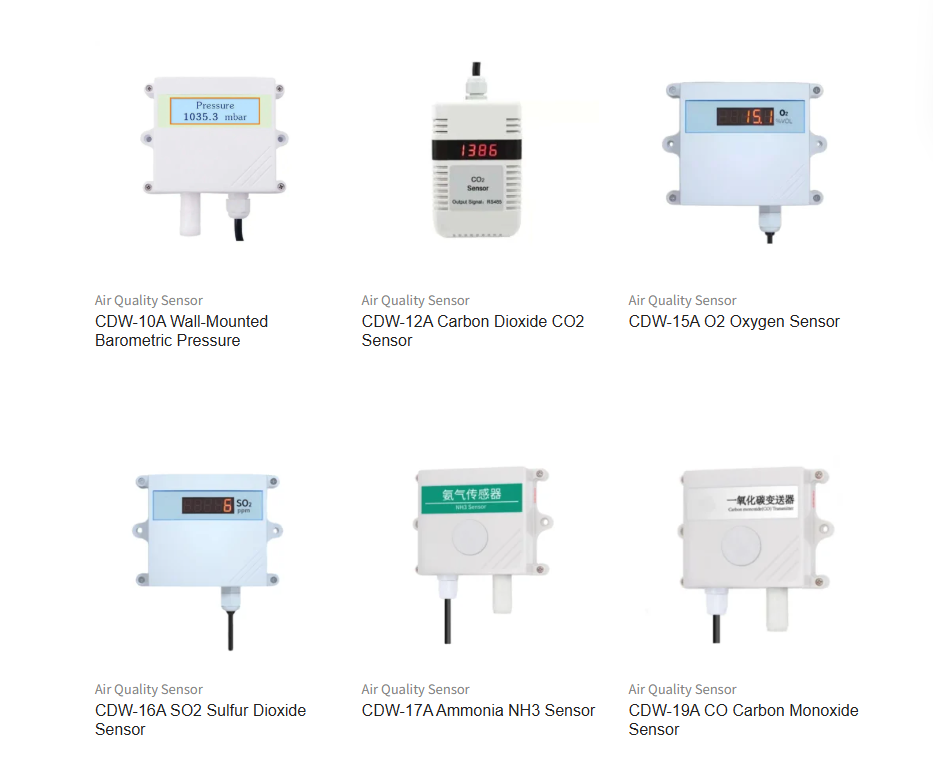From the critical operations of industrial plants to the seamless comfort of smart homes, gas sensors are quietly weaving a sophisticated network of safety and operational intelligence. More than just alarm systems, they are fundamental tools for achieving refined management, environmental compliance, and unparalleled system reliability. These invisible guardians have become truly ubiquitous across modern infrastructure.
In sectors that handle volatile or toxic substances—such as oil and gas, chemical manufacturing, and heavy industry—reliable gas detection is a compulsory necessity for protecting personnel and assets. CODA sensors, known for their exceptional robustness and reliability, provide the immediate, actionable intelligence required in these demanding environments.
For industries dealing with hydrocarbons and reactive chemicals, sensors serve as the primary line of defense. They are engineered for high-precision, continuous monitoring of gases like Methane, Hydrogen Sulfide (
Flammable Gases: Continuous monitoring prevents explosions by detecting leaks of combustible gases, automatically triggering alarms or activating ventilation systems well before the Lower Explosive Limit (LEL) is reached.
Toxic Gases: Protecting personnel from invisible poisons is paramount. CODA’s specialized professional sensors are designed for high-accuracy detection and rapid response, crucial for ensuring worker safety against highly lethal substances like
Beyond safety, gas sensors are essential tools for fine-tuning complex industrial processes. Monitoring the exact gas composition within a reactor or analyzing emission levels allows companies to maintain product quality, minimize energy consumption, and adhere to strict environmental standards.
Complementary Monitoring: In large industrial complexes, CODA's environmental products, such as the CDF-10A Anemometer (a wind speed sensor), often work alongside gas detection systems. This allows operators to model potential gas dispersion, which is crucial for emergency planning and mitigating pollution risks.

The integration of advanced gas sensing into smart buildings has redefined both residential and commercial safety, evolving far beyond simple smoke alarms to focus on holistic Indoor Air Quality (IAQ) management for health and efficiency.
While the detection of natural gas leaks and Carbon Monoxide (
Occupant Health: Elevated
Energy Efficiency: By providing real-time data on air quality, smart ventilation systems only exchange air when necessary, avoiding unnecessary heating or cooling of incoming outdoor air, leading to significant energy savings.
Advanced gas sensors can detect the molecular precursors of fire—such as pyrolysis gases—offering an even earlier warning than traditional optical or ionization smoke alarms. This increased response time is critical for saving property and lives in an emergency.
The environmental monitoring sector is where gas sensors exert a profound influence on global systems, particularly concerning food security and climate change research.
Controlling the atmosphere both during growth and storage is key to maximizing agricultural yields and minimizing post-harvest waste.
Optimizing Growth: In greenhouses,
Controlling Ripeness: Ethylene gas (
Integrated Solutions: To provide a comprehensive picture, specialized devices like CODA’s Multi-parameter Soil Sensor (measuring NPK, pH, EC, and moisture) work synergistically with atmospheric gas data to ensure crops receive the most scientifically managed environment possible.
Government agencies and research institutions rely heavily on sensor networks to track regional air quality and atmospheric shifts.
Pollution Mapping: Networks of sensors map urban levels of pollutants like Nitrogen Dioxide (
Climate Data: High-precision sensors track atmospheric
The gas sensor is not just a technological component; it is a fundamental driver of security, health, and efficiency across every major industry. Whether guaranteeing survival in a chemical plant or optimizing crop yield on a farm, this technology serves as the invisible foundation of our reliable and connected world.
CODA offers a reliable product range from the CDF-10A wind sensors to advanced Multi-parameter Soil Sensors and the complete CDQ-T6A Mini Ultrasonic Weather Station, ensuring your system benefits from robust, accurate, and comprehensive environmental sensing solutions.
If you are interested in exploring the specific implementation of CODA sensor solutions in Industrial Safety, Smart IAQ, or Precision Agriculture, please let us know!
Discover how CODA gas sensors are the invisible
Eliminate solar heating errors and achieve accur
Learn why Water Quality Monitoring is vital for
Contact: Molly
Phone: +86-17775769236
Tel: 86-0731-85117089
Email: molly@codasensor.com
Add: Building S5, Aux Square, Yuelu District, Changsha City, Hunan Province, China
We chat